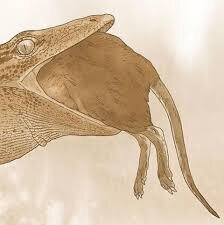
Title: Ancient Scottish Discovery Sheds Light on Reptilian Evolution
A Window into the Jurassic World
The Isle of Skye in northwestern Scotland, a renowned paradise for paleontologists, has yielded another spectacular discovery. A newly analyzed fossil from this fossil-rich region belongs to an ancient creature from the Middle Jurassic period, a time when dinosaurs dominated the planet. The species has been given the scientific name Breugnathair elgolensis, a name derived from the native Scottish language meaning “false snake of Elgol.”
A Creature of Contradictions
What makes this fossil exceptionally unique is its surprising combination of physical traits. The creature possessed sharp, recurved teeth, strikingly similar to those of modern snakes. Yet, it was equipped with an elongated body and four fully-formed limbs, akin to a lizard. Scientists estimate the animal was about 40 centimeters long, making it one of the larger reptiles in its habitat.
A Potential Evolutionary Missing Link
This discovery holds significant weight in answering one of biology’s great mysteries: the origin of snakes. Breugnathair elgolensis may help unravel part of this enigma. The presence of snake-like teeth indicates that key characteristics associated with modern snakes had begun to evolve long before the group fully emerged. Simultaneously, its four functional limbs provide concrete evidence that snakes likely evolved from four-limbed reptilian ancestors. This blend of features positions the fossil as a potential missing link in the complex history of reptilian evolution.
A Decade of Meticulous Work
This breakthrough was not an overnight find. The initial fossil was discovered over a decade ago near the village of Elgol on Skye. A dedicated team of researchers then employed advanced scanning technology to meticulously reconstruct the creature’s skull and limb structure. Their work confirmed that this species belongs to an extinct family called Parviraptoridae, of which only a few fragmented specimens were previously known.
Unanswered Questions and Future Research
Despite the excitement surrounding this find, major questions remain. Was this creature a direct ancestor of modern snakes, or does it represent a parallel, evolutionary branch? What other species from this era are yet to be discovered? Scientists are hopeful that continued exploration in Skye and other global sites will gradually provide the answers to these puzzles. This 160-million-year-old creature, while no longer walking the earth, continues to tell a fascinating story about our planet’s past and the enduring mysteries of evolution.